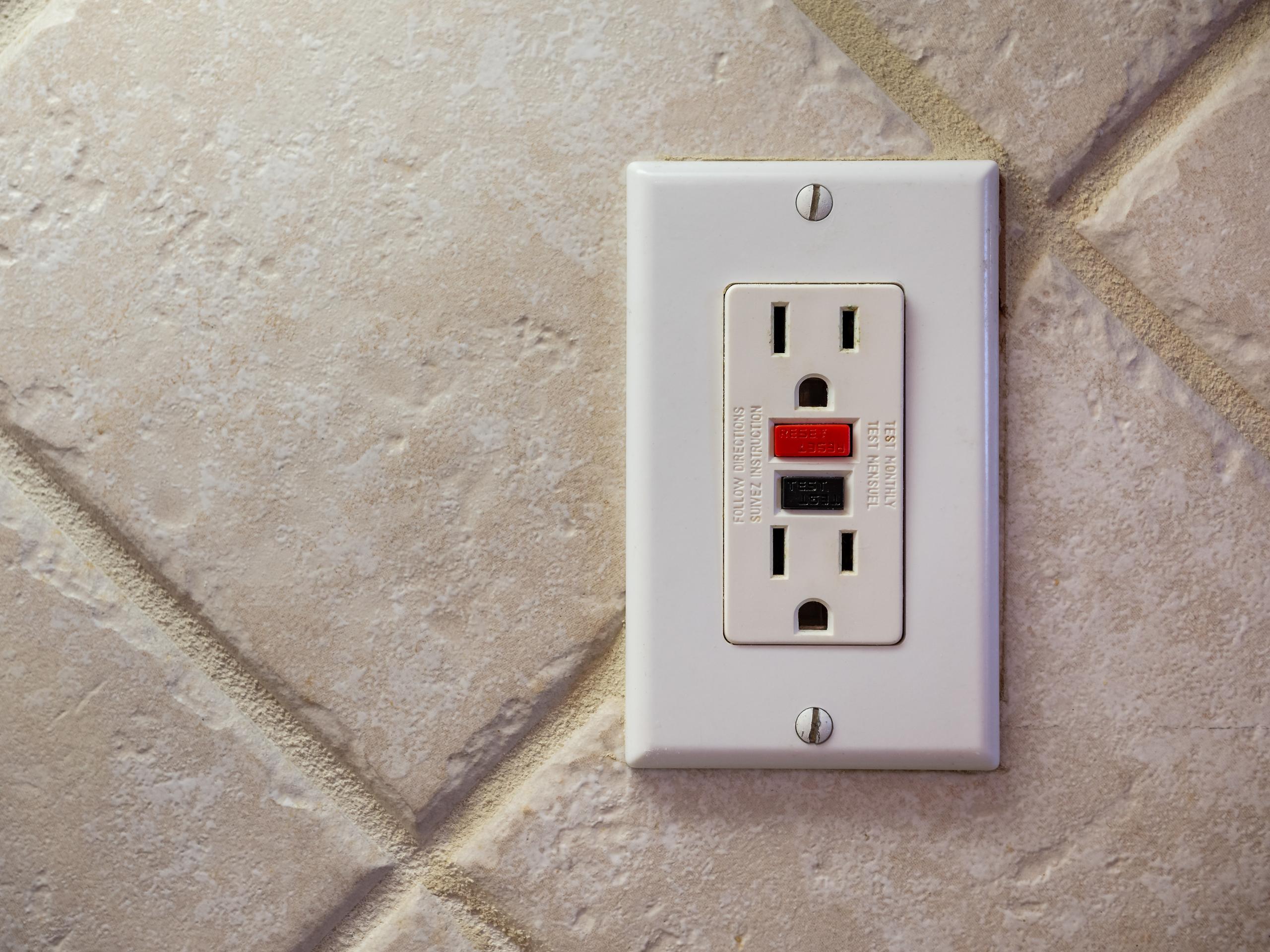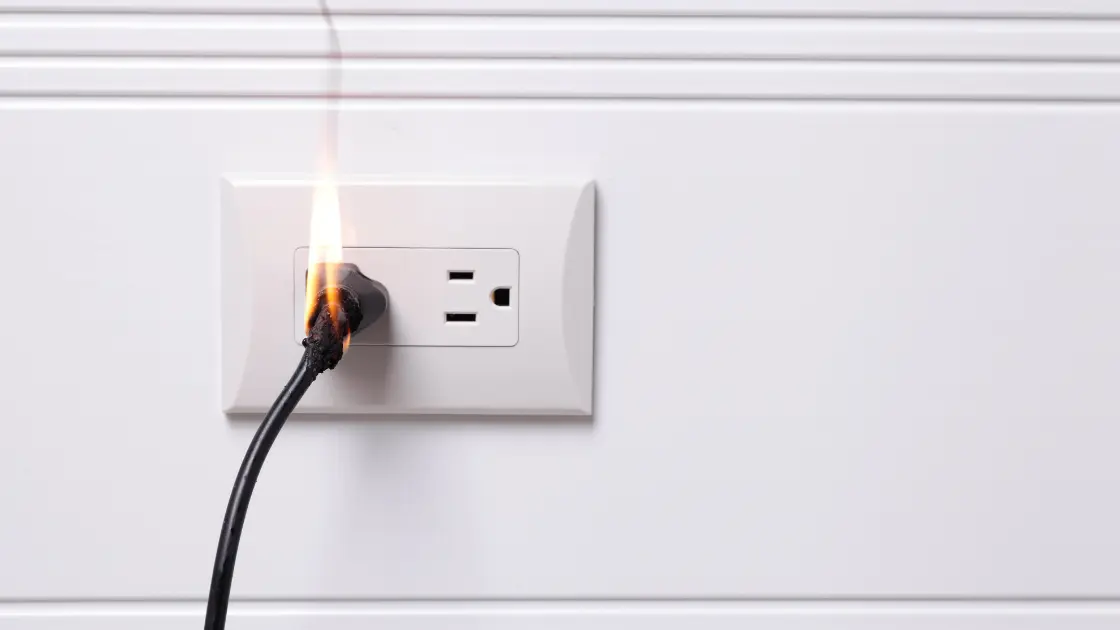Electrical outlet safety is crucial to prevent hazards such as sparking, visible burn marks, and buzzing sounds. Ensuring outlets are not overloaded, minimizing extension cord usage, and using child-proof measures are key safety practices.
Regularly checking for overheating, flickering lights, and installing ground fault circuit interrupters can further enhance safety. Securing sliding plates over outlets and keeping water away from electric circuits are additional preventive measures to safeguard against potential dangers. Regular inspection of cords and covers is essential to spot any damage and promptly replace them for safe usage.
Cool-touch outlets indicate safe operation and should be routinely checked to maintain electrical safety standards.
Electrical Outlet Safety Checklist
Electrical outlets are an essential part of our daily lives, providing power to our devices and appliances. However, if not used and maintained properly, they can pose a significant safety hazard. To ensure the safety of your home and family, it’s crucial to adhere to an Electrical Outlet Safety Checklist. This checklist will help you identify potential risks and take the necessary precautions to prevent electrical accidents.
Avoid Overloading Outlets
Avoid overloading outlets by using too many devices or appliances at once. This practice can lead to overheating and potential fire hazards. Utilize power strips with built-in circuit breakers to prevent overloading, and distribute the load evenly across multiple outlets.
Minimize Extension Cord Usage
Minimize the use of extension cords whenever possible, as they can become tripping hazards and may also lead to overloading if not used properly. Consider installing additional outlets in areas where you frequently rely on extension cords to power your devices.
Prevent Usage Near Water
Never use electrical appliances near water sources to avoid the risk of electric shock. Keep outlets and cords away from wet areas such as bathrooms, kitchens, and outdoor spaces. Additionally, consider installing ground fault circuit interrupters (GFCIs) in these areas for enhanced protection.
Regularly Check For Overheating
Regularly inspect outlets and cords for signs of overheating, such as discoloration or a burning odor. Warm outlets should be investigated promptly to identify and resolve any underlying issues. Consider consulting a qualified electrician for a professional assessment if you notice any concerning signs.

Credit: www.amazon.com
Child-proofing Electrical Outlets
Child-proofing electrical outlets is essential for ensuring electrical outlet safety. By utilizing sliding plate covers or tamper-resistant outlets, you can protect your children from potential hazards, such as electrical shocks or burns. Remember to regularly check cords, covers, and outlets for any signs of damage or overheating to maintain a safe environment.
Child-proofing electrical outlets is crucial to ensure the safety of young children in your home. Utilizing Child-Proof Electrical Tactics can help prevent accidents and keep your little ones protected. Two effective measures for child-proofing outlets include Secure Sliding Plate Covers and Tamper-Resistant Outlets. Secure Sliding Plate Covers are a practical way to child-proof electrical outlets. These covers can be easily installed and provide a physical barrier against little fingers. When you need to use the outlet, simply move the plate temporarily and slide it back when not in use. Tamper-Resistant Outlets are another effective solution for child-proofing. These outlets have built-in safety mechanisms that prevent foreign objects from being inserted. They are designed to only allow a plug to be inserted when equal pressure is applied to both prongs simultaneously. By implementing these child-proofing measures, you can create a safer environment for your children and reduce the risk of accidents. Always prioritize the safety of your little ones by utilizing these effective tactics to child-proof your electrical outlets.Installation Of Safety Devices
Ensure the safety of your electrical outlets with these tips: avoid overloading circuits, minimize extension cord usage, keep electrical appliances away from water, check for overheating outlets, use child-proof measures, and consider installing ground fault circuit interrupters (GFCIs) and arc-fault circuit-interrupters.
Protect your home and loved ones from electrical hazards.
Ground Fault Circuit Interrupters (gfcis)
One of the most important safety devices to consider when it comes to electrical outlet safety is a Ground Fault Circuit Interrupter (GFCI). GFCIs are specifically designed to protect against electrical shock and are typically installed in areas where water is present, such as bathrooms, kitchens, and outdoor outlets. GFCIs work by constantly monitoring the current flowing through the circuit. If a ground fault is detected, such as a person coming into contact with water while using an electrical appliance, the GFCI quickly shuts off the power, preventing electrocution. It is crucial to install GFCIs in these areas to ensure the safety of your family and prevent dangerous accidents.Arc-fault Circuit-interrupters (afcis)
In addition to GFCIs, another safety device that plays a significant role in electrical outlet safety is an Arc-Fault Circuit-Interrupter (AFCI). AFCIs are designed to detect and prevent electrical arcs, which are a common cause of electrical fires. Electrical arcs occur when there is a loose or damaged wire that creates a gap in the circuit. These arcs produce heat, which can easily ignite nearby flammable materials. By installing AFCIs in your home, you can significantly reduce the risk of electrical fires caused by arcs. AFCIs continuously monitor the electrical circuit for any abnormal arcing, such as sizzling or sparking, and immediately cut off power to the circuit if a potential hazard is detected. This provides an added layer of protection for your home and ensures the safety of your loved ones. By installing both GFCIs and AFCIs in your home, you can greatly enhance the electrical outlet safety and prevent accidents, shocks, and fires. It is always recommended to consult with a professional electrician to ensure proper installation and to comply with electrical safety regulations. Your family’s safety is worth the investment in these essential safety devices.
Credit: www.whe.org
Regular Maintenance And Inspection
Regular maintenance and inspection are crucial for ensuring electrical outlet safety. Detecting issues like sparking, burn marks, or strange sounds can prevent hazards and protect your home from electrical accidents. Stay proactive with safety checks to keep your family and property secure.
Regular Maintenance and Inspection of electrical outlets is crucial to ensure the safety of your home and family. By conducting regular checks and monitoring the condition of cords and covers, you can prevent potential hazards and keep your electrical systems functioning optimally.Regularly Checking Cords And Covers
Inspect cords for any fraying or damage. Replace cords that show signs of wear and tear. Ensure covers are intact and secure. Avoid using damaged cords or covers.Monitoring Outlet Temperature
Touch outlets occasionally to check for warmth. Cool outlets are a sign of safe usage. Warm or hot outlets may indicate a problem. Address overheating issues promptly.Additional Safety Measures
To enhance electrical outlet safety, implement additional safety measures such as minimizing extension cord usage, avoiding overloading outlets, and utilizing child-proof electrical tactics. Regularly check cords and covers for damage and ensure outlets are cool to the touch. Consider installing ground fault circuit interrupters (GFCIs) to prevent hazards.
Additional Safety Measures Now that we are aware of the basic safety precautions for electrical outlets, it is crucial to consider additional safety measures. These extra steps can further minimize the risk of electrical hazards and protect your home and loved ones.Keeping Water Away From Electric Circuits
One of the most important additional safety measures is to keep water away from electric circuits. Never use electrical appliances near water sources such as sinks, baths, or swimming pools. Moreover, it is essential to install Ground Fault Circuit Interrupters (GFCIs) in areas where water is present, such as kitchens, bathrooms, and outdoor outlets. GFCIs can detect imbalances in current and quickly interrupt the circuit, preventing electrical shock.Maintaining Distance From Flammable Materials
Maintaining distance from flammable materials is equally significant. It is crucial to keep combustible items like curtains, paper, or upholstery away from electrical outlets and appliances. Additionally, using outlet covers or plates can act as a barrier, preventing any sparks or heat from coming into contact with flammable materials. In conclusion, implementing these additional safety measures alongside the standard precautions can significantly reduce the risk of electrical accidents and ensure a safer environment for everyone.Educational Resources
When it comes to electrical outlet safety, educating yourself about potential risks and best practices is crucial. Access to educational resources is essential for understanding the dangers associated with electrical outlets and learning how to mitigate these risks. Educational materials such as videos, articles, and infographics can provide valuable insights into outlet safety and help promote a safe environment for both residential and commercial spaces.
Educational Videos On Outlet Safety
Informative videos can serve as a powerful tool for raising awareness about electrical outlet safety. These videos often cover topics such as proper outlet usage, identifying potential hazards, and understanding the importance of regular maintenance. Through engaging visuals and practical demonstrations, viewers can gain a better understanding of electrical outlet safety measures and the potential dangers associated with improper usage.
Understanding Electrical Outlet Sparks
Sparks from electrical outlets can pose significant risks if left unaddressed. Understanding the causes of electrical outlet sparks is crucial for implementing effective safety measures. Educational materials that shed light on the common reasons behind outlet sparks, such as overloading, wiring issues, or damaged components, can help individuals identify potential hazards and take appropriate measures to address them promptly. By enhancing their knowledge of outlet sparks, individuals can contribute to a safer electrical environment in their homes or workplaces.

Credit: smithandkeene.com
Frequently Asked Questions
What Are The Hazards Of Electrical Outlets?
Electrical outlet hazards include sparking, burn marks, buzzing sounds, and overheating. Use child-proof tactics and GFCIs, and avoid overloading and using appliances near water. Keep cords and outlets in good condition and install tamper-resistant outlets. Never use warm outlets and keep water away from electrical circuits.
How To Make Sure Your Outlet Is Safe?
To ensure your outlet is safe, follow these tips: Avoid overloading circuits, minimize extension cord use, keep appliances away from water, check for overheating, and use child-proof measures. Regularly inspect cords and covers for damage and ensure outlets are cool to the touch.
What Is The 6 Rule For Outlets?
The 6 rule for outlets states that you should avoid overloading circuits, minimize extension cord usage, keep electrical appliances away from water, check for overheating, utilize child-proof measures, and install safety devices like GFCIs and AFCIs to ensure electrical outlet safety.
How To Safely Cover An Electrical Outlet?
To safely cover an electrical outlet, use a sliding plate. These plates are secure and the least likely to be a choking hazard. Simply move the plate temporarily when you need to use the outlet, and slide it back when you’re done.
Conclusion
Prioritizing electrical outlet safety is crucial for preventing hazards at home. Implementing safety measures, such as not overloading outlets, using child-proof tactics, and checking for overheating, can protect your family and property from potential dangers. Stay safe and secure with proactive electrical safety practices.



